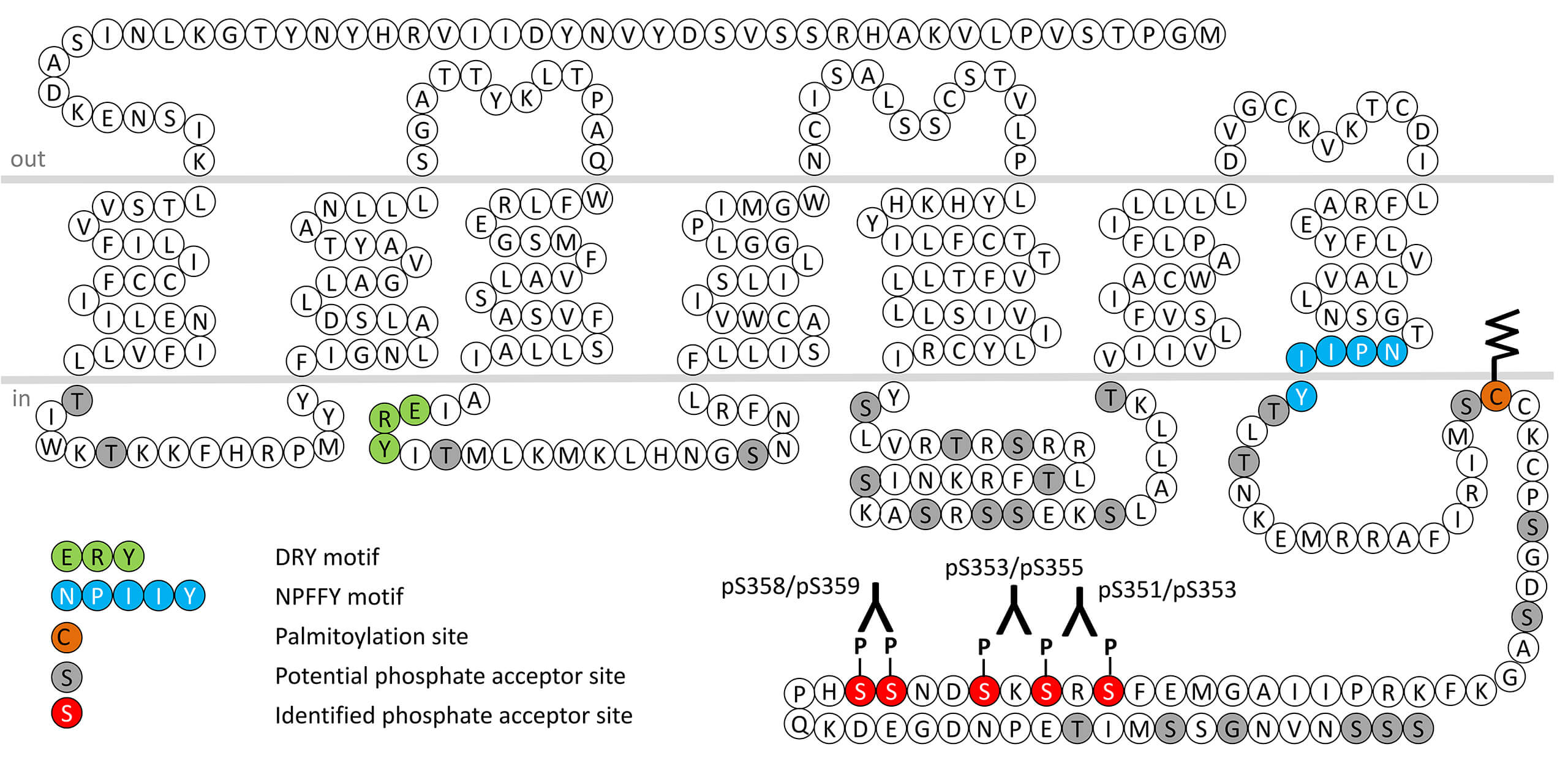Sphingosine 1-Phosphate Receptor 1 Phosphorylation Assays

The S1P1 receptor is expressed throughout all mammalian organ systems. S1P1 receptor activation down-regulates allergic inflammation. In human cord blood mast cells, S1P1 is required for migration but not for degranulation or cytokine and chemokine release. S1P1 expression is elevated by allergen challenge in allergic rhinitis patients, but not in corticosteroid treated patients. Functionally, S1P1 receptors are able to couple to the pertusiss toxin-sensitive Gi/o-proteins. Signaling is required for normal chemotaxis toward sphingosine 1-phosphate. S1P1 is required for normal embryonic heart development and normal cardiac morphogenesis. It also plays an important role in the regulation of sprouting angiogenesis and vascular maturation. S1P1 receptor desensitization, β-arrestin recruitment and internalization are regulated by phosphorylation of carboxyl-terminal serine351/threonine353/serine355 (pS351/pT353-S1P1) and (pS353/pT355-S1P1) and serine358/serine359 (pS358/pS359-S1P1). This nomenclature refers to the human S1P1 receptor. This phosphorylation motif is highly conserved across species and is identical mice, rats and humans. For more information on S1P1 pharmacology please refer to the IUPHAR database. For further reading refer to:
Chun J, Hla T, Lynch KR, Spiegel S, Moolenaar WH. International Union of Basic and Clinical Pharmacology. LXXVIII. Lysophospholipid receptor nomenclature. Pharmacol Rev. 2010 Dec;62(4):579-87. doi: 10.1124/pr.110.003111. PMID: 21079037; PMCID: PMC2993255.
Kihara Y, Maceyka M, Spiegel S, Chun J. Lysophospholipid receptor nomenclature review: IUPHAR Review 8. Br J Pharmacol. 2014 Aug;171(15):3575-94. doi: 10.1111/bph.12678. Epub 2014 Jul 12. PMID: 24602016; PMCID: PMC4128058.
Blaho V, Chun J, Herr D, Jones D, Jonnalagadda D, Kihara Y. Lysophospholipid (S1P) receptors in GtoPdb v.2023.1. IUPHAR/BPS Guide to Pharmacology CITE. 2023; 2023(1).
 pS351/pS353-S1P1 Phosphorylation Assay Kit
pS351/pS353-S1P1 Phosphorylation Assay Kit  pS358/pS359-S1P1 Phosphorylation Assay Kit
pS358/pS359-S1P1 Phosphorylation Assay Kit 

